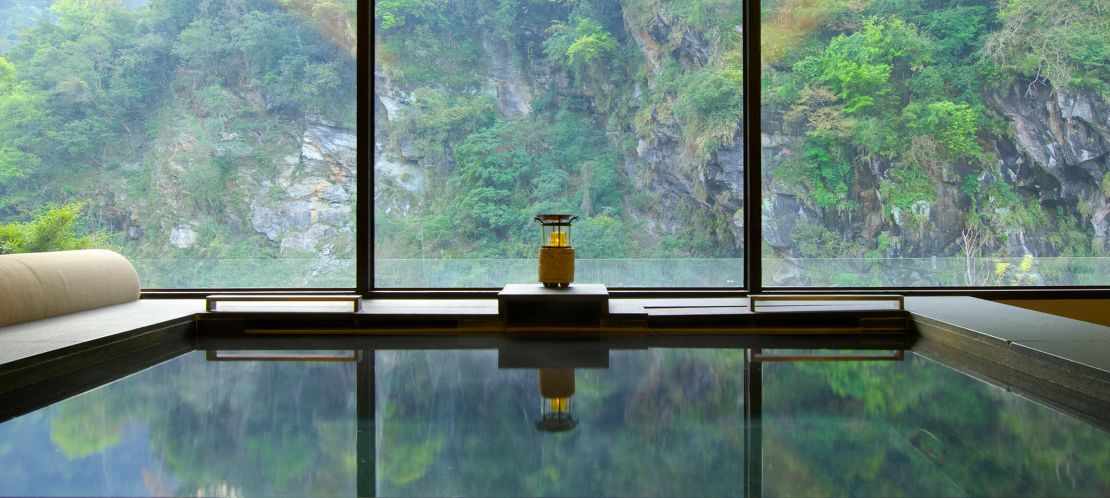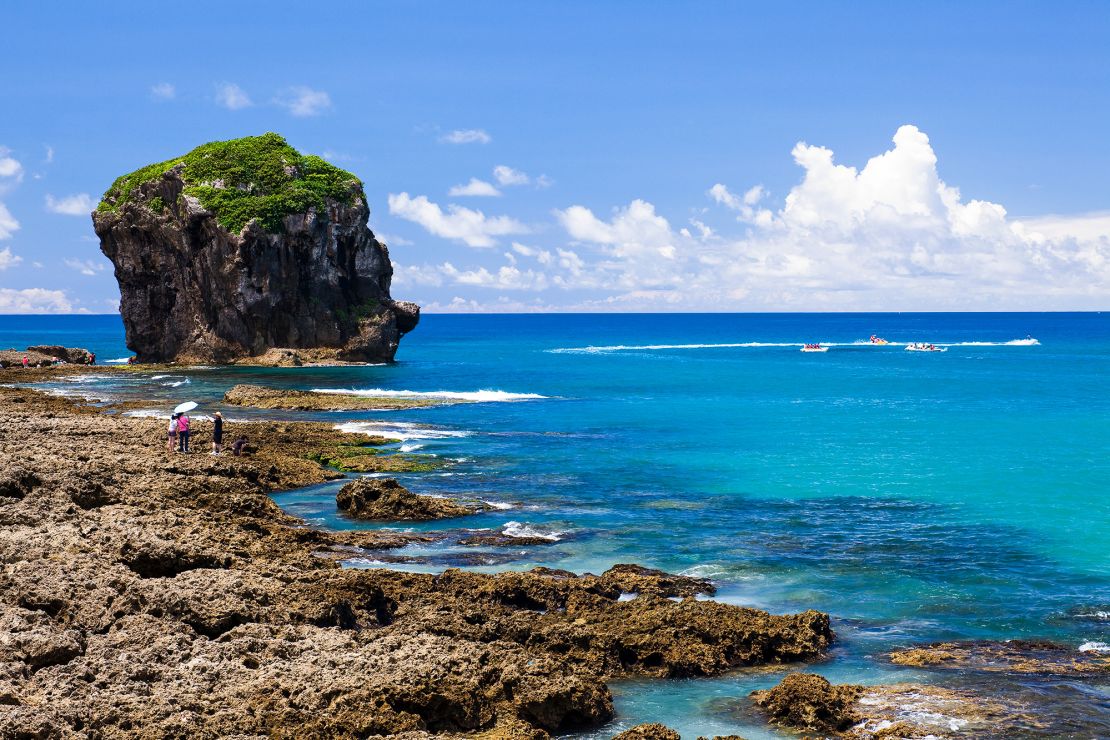Editor’s Note: This CNN Travel series is, or was, sponsored by the destination it highlights. CNN retains full editorial control over subject matter, reporting and frequency of the articles and videos within the sponsorship, in compliance with our policy.
More than 260 peaks over 3,000 meters (9,800 feet), hiking trails blazed by Indigenous people thousands of years ago, remarkable national parks and forests, and epic surf churned up by waves that roll unimpeded across the entire Pacific.
That may sound like Chile, New Zealand or even California. But rather than one of the more obvious outdoor wellness and adventure hubs, it’s actually Taiwan.
Nowadays, this big island packs a lot of punch for a place that’s around the same size as Belgium or Massachusetts.
Topping it off, Taiwan also offers a post-adrenalin-rush opportunity to chill out, sleep in climate-controlled comfort, recharge your physical and mental batteries, and dive into gourmet cuisine at upscale lodges and resorts in national parks and scenic areas.
“Several factors have contributed to the rapid growth of outdoor sports in Taiwan,” says Kate Chen of the Taiwan Tourism Administration.
“The diverse landscapes offer ideal settings for a wide range of adventure sports and the compact size of the island makes it easy to access destinations within a few hours, making exploration convenient for visitors.”
The pandemic was a major turning point, says Michael McCreesh, founder of Taiwan Outdoors, which offers adventure tours, and the ParkBus Taiwan city-to-wilderness shuttle service.
“The borders were closed but you could travel domestically,” he says. “There was a huge spike in young adults wanting to go hiking or cycling.”
But it’s not just locals discovering the island’s outdoor opportunities. Taiwan’s wide new world is also easy for international visitors to tap into.
Wellness and nature retreats
Wilderness camping and backpacking are possible but still relatively rare in Taiwan. Not so when it comes to luxuriating at remote lodges and resorts in amazing locations.
Deep down in Taroko Gorge, Silks Place Taroko resort offers five-star comfort, cuisine and amenities like a spa with health and beauty treatments, indoor and outdoor swimming pools, morning yoga sessions and even a kids club.
Yet nature is close at hand, including Taroko highlights like the Baiyang Trail with its tunnels and waterfalls, and the path that leads to the multi-storied Hsiang-Te Pagoda. (The resort is slated to reopen early next year following the repair of damage sustained during Typhoon Krathon.)
Meanwhile, The Lalu resort sits along the shoreline of Sun Moon Lake National Scenic Area in the central highlands. The chic lakeview suites feature private balconies with panoramic views of the water and mountains, and fireplaces to take the edge off the winter chill.
Right outside the hotel are hiking and biking paths. The 30-kilometer (18-mile) bike trail around the lake is “ranked as one of the top 10 cycling routes around the world,” says Chen.
For those in search of a tougher trek, The Lalu can arrange transportation to trailheads for the Shuishe Great Mountain Nature Trail or the Maolan Mountain Trail. It’s also easy to access the culture, cuisine and handicrafts of the Thao and Bunun Indigenous peoples who have called the Sun Moon region home for thousands of years.

You don’t even have to venture far from Taipei to experience nature. Volando Urai Spring Spa & Resort, in the hot springs-filled Wulai District of the Nanshi River valley, lies less than an hour’s drive from the city’s downtown area.
A member of the Relais & Châteaux group, the resort offers top-notch French and Chinese restaurants, as well as a spa that blends Western and Eastern treatments, and private hot spring bathhouse rooms with river views. Premium suites open onto private gardens with a swimming pool and a rooftop terrace.
There are dozens of hiking options near the Volando Urai, from the switchbacks up to the lofty Baoqing Temple and the scenic trails of the Neidong Forest Recreation Area, to entire day treks in the Tonghou River Valley, with its waterfalls and jungle-like ambiance.
Other places that combine nature and upscale nurture include the Villa 32 luxury boutique hotel and hot spring resort in Beitou near the north coast; and Mudanwan Villa near Kenting National Park on the south coast.
Where the wild things are
Taiwan boasts 10 national parks and 19 national forest recreation areas covering a wide range of terrain, from coastlines and coral atolls to lush subtropical evergreen forests and peaks that rise high above the treeline.
“The national parks in Taiwan have a mandate more for preservation and conservation,” says McCreesh. “And the national forests are more oriented towards visitation and public access.”
The island’s most famous nature reserve is Taroko National Park, which safeguards the aforementioned Taroko Gorge, a colossal 18-km (11-mile) chasm carved by the swift-flowing Liwu River. Also called the Marble Gorge because of its predominant rock type, the canyon can be explored via the narrow, twisting Zhong Bu Cross-Island Highway or vertiginous hiking trails that cross suspension bridges and run through tunnels.
Chen says Taroko National Park also includes a spectacular Pacific coastline, and that one of the coolest activities is a guided sunrise kayak trip along the towering Qingshui sea cliffs.
Meanwhile, Taiwan’s highest peak punctuates the sky above Yushan National Park. Rising nearly 4,000 meters (13,100 feet) above sea level, it’s the world’s fourth-highest island mountain.
“The best sunrise I’ve ever seen was from high above the clouds on the peak of Jade Mountain — a smidge taller than Mt. Fuji — in Yushan National Park,” says Nick Kembel, a Canadian writer and photographer based on the island and author of the upcoming Nick’s Taiwan Travel Guide & Itineraries.

Perched near the island’s southern tip, Kenting National Park is renowned for its tropical climate, weird rock formations and sandy beaches, plus the popular Taiwan Music Festival that takes place in the park each spring.
Floating in the South China Sea between Taiwan, Hong Kong and the Philippines, Dongsha Marine National Park offers an entirely different take on outdoor adventure. One of the world’s northernmost atolls, it harbors pristine coral reefs, vast seagrass meadows and onshore nesting sites for sea turtles and seabirds.
Sometimes called Taiwan’s best-kept natural secret, national forests often feature nature centers that focus on the island’s diverse flora and fauna and forestry culture parks, where you can learn about human history and activities in the woodlands. They also provide a venue for more than 100 nature trails that are part of a national trails network created in 2002.
“Taipingshan and Alishan are my favorite National Forest Recreation Areas,” says Kembel. “Both are former logging areas with easy walking trails and heritage railway lines through ancient, mist-shrouded hinoki forests.”
Hitting the trail … and the waves
While hiking and biking may be the easiest ways to access outdoor Taiwan, the island is also fertile ground for scuba diving and snorkeling, rock climbing and sea kayaking, and many other energetic pursuits.
“There’s no better or easier way to tap into Taiwan nature than by hiking,” says Kembel. “Within one hour from Taipei, you can be strolling past steaming volcanic fumaroles, bubbling hot springs, canopies of cherry blossoms or towering bluffs above the sea.”
McCreesh estimates that between wilderness and urban/suburban routes, there are now thousands of trails to choose from. The AllTrails app lists more than 900 hiking routes including 78 it deems as family friendly. Most of these are fairly short. But the app also lists longer treks like a Taipei Grand Trail that meanders 92 kilometers (57 miles) through the mountains that curve around the capital city.
Taiwan’s 29 Indigenous groups — people who inhabited the island before the arrival of the first mainland Chinese settlers — have become an important part of the hiking scene. Many of the trails cross their traditional territories and guided multiday treks (like those offered by Taiwan Outdoors) often overnight in remote tribal villages.
Chen recommends the Alangyi Historic Trail: “It runs along one of Taiwan’s last undeveloped seashores, where low altitude coastal forest is well preserved. The trail served as a commute route for Indigenous tribes for hundreds of years. Hiking along the trail, visitors reach a pebble stone beach and have breathtaking views of the Pacific.”
For really avid hikers, the crown jewel of Taiwan trekking is the Baiyue (100 Peaks Challenge), which entails summiting 3,000-meter mountains considered the island’s most historic, scenic or dramatic. There’s also the Xiao Baiyue (100 Minor Peaks Challenge) to knock off the top urban and suburban trails.
Cycling is a close second when it comes to Taiwan’s most popular outdoor sport but mountain biking is relatively new. For the time being, Yetopia in east coast Yilan County offers the island’s only MTB trail network. But road cycling is widespread, and with paved shoulders, many of the rural highways and byways have been adapted for biking.
The east coast also boasts the island’s best surfing conditions. And maybe best of all, there aren’t a lot of surfers competing for the best waves. Based in Hualien City, Taiwan Surf Travel puts together packages that include accommodation, meals, gear and transportation to some of the best surf spots.
Hualien City is also the jumping-off point for whitewater rafting down the rapid-strewn Xiuguluan River. A guided trip takes three-to-four hours, usually with a halfway stop at the Amis aboriginal village.














